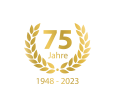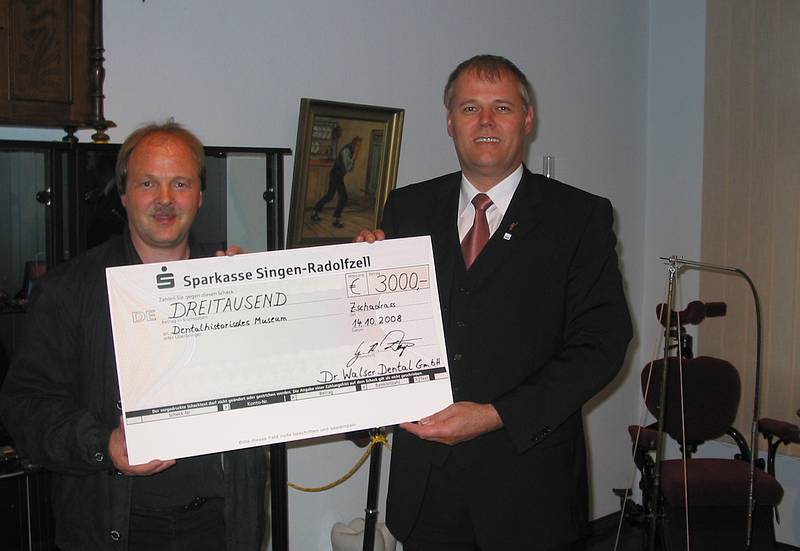Donate of the Dr. Walser Dental, manufacturer of tooth matrices, for worldwide unique dental museum
18/10/2008
This week the managing director Gerhard R. Daiger presented a donation cheque in the amount of 3000, - € in the dental museum in Zschadraß for the further extension of the "Quadriga Dentaria".
The Dr. Walser Dental GmbH, whose dental matrix system is very successful worldwide, represented by the owner Gerhard R. Daiger, donated 3.000,- € to the world's biggest and unique dental historical museum. Daiger, who extra arrived from Radolfzell, presented the donation cheque personally to the chairman of the organization for the support and care of dental historical museum, Mr. Haesler in Zschadraß, from Leipzig to Dresden half an hour's drive.
The four buildings which have been built in clinker brick style in 1894 and are in a good condition are located in a 120 years old, beautiful park on an area of 10.800 square metres. The museum building is here and the "Quadriga Dentaria" is made here from permanent development with further buildings like a library, conference room and accessible archive as well as the college of technology and the guesthouse.
The dental museum, a place of the dental history with all its facets, a centre for mankind and civilization history is located in permanent extension, something similar does not exist. The largest problem is the space question because the thousand pieces counting collection, a journey through the centuries, grows virtually hourly. So one can find objects like toothpicks or toothbrushes with a brush head out of wood fibres from the earliest history of mankind. And the more known the extension of the dental museum becomes, the faster is the inflow of exhibits.
Already today the dental historical museum has the greatest fund worldwide and also the most extensive exhibition space. "Never before so many people could be filled with enthusiasm by this subject area", Andreas Haesler explains enthusiastic to the owner the Dr. Walser Dental.
The dental museum, so Daiger, also should be for children and the population of great interest, since the museum shows how teeth were treated by simple means in the past. In addition, visitors also can marvel at entertaining things on the topic "teeth", such as caricatures, toys and figurative representations. On the other hand he sees here a nearly inexhaustible source for students and dentists continuing their education to get unique information about the dental history. In his opinion the visit of the museum should be a duty programme of everybody studying dentistry.




